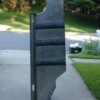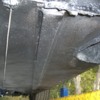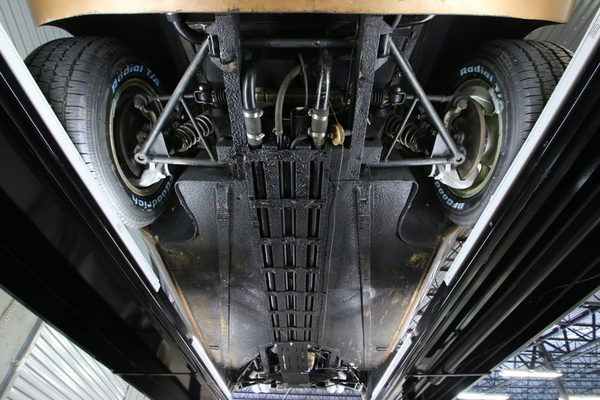V8jet, thanks for the great account of your adventure the other day, that was a brave move, hat's off for getting the Goose out and representing DeT so well!!
Had a pic of my LH (driver's side) floor pan that replicated 1010's heavily rusted original, showing where the stiffening ribs go. Floating nuts for the seat are in the lower 2 ribs so that defines where they need be located (nuts fall on the approximate center line of those ribs). The ribs themselves taper down in height, c. 24mm tall at the backbone, and c. 14mm at the sills. This compensates for the fact that the L & R floorpans aren't planar, but instead slope slightly downward toward the center of the car. Thickness was 1.5mm.
The passenger side is functionally identical although narrower by about 2" IIRC. The biggest dangers seemed to be getting the seat mounts in the wrong place. The floating nuts don't provide much movement and if the seat tracks end up even slightly cattywompus (ie non-parallel) the seats won't slide well, making their installation and removal a HUGE pain. There is minimal clearance for the passenger seat - on either side of the seat, at least with the late 1 piece buckets - so correct placement of those mounts is critical!
Pic 2 shows the long stiffeners, which are c. 12mm tall only. The 'box' section was ~43mm wide.
Pics 3 and 4 are different cars....note how the location of the driver's seat is biased substantially toward the sill. This image is from an early car so I'm relatively sure all cars were like this, not just the 2-light cars that had a headlamp lift lever to accommodate. As shown in pic 4, the floorpans rest on top of the flange running the length of the backbone. Finally, comparing pics 2 and 4, I can only conclude that the exact location of long stiffeners must have varied somewhat car to car!








